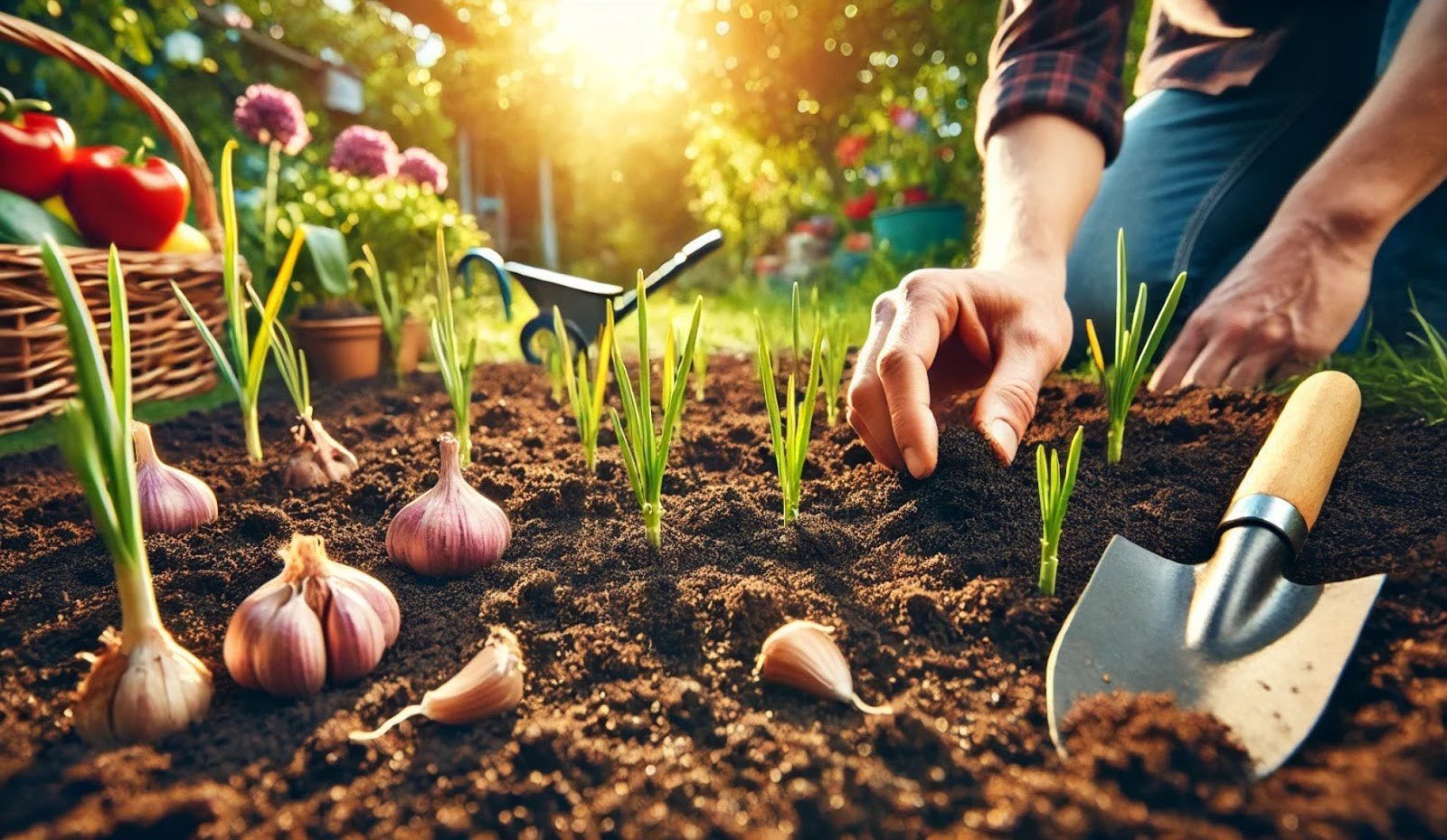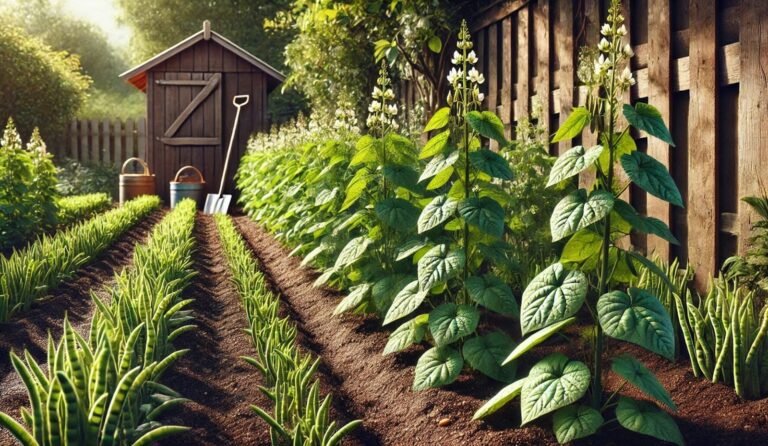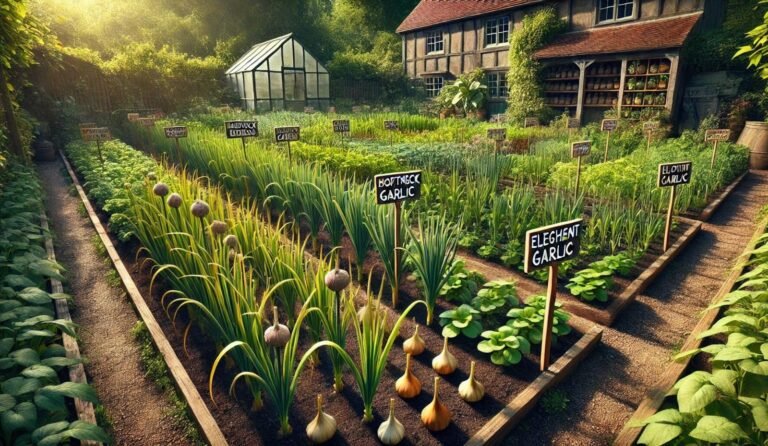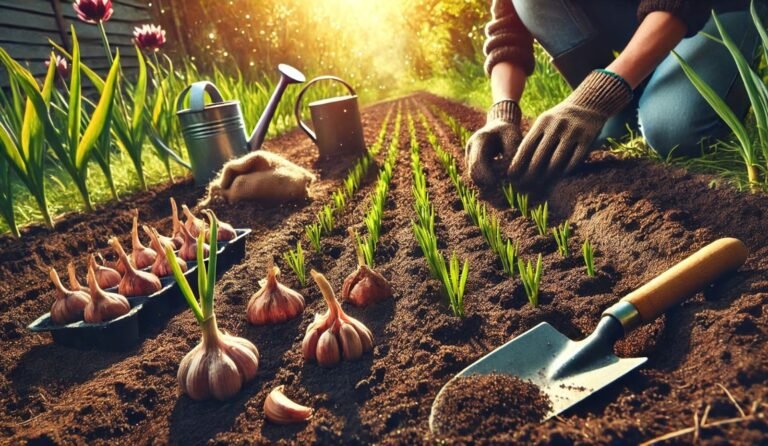Can You Plant Garlic in the Spring? A Complete Growing Guide
Can you plant garlic in the spring? Yep, and while fall is the gold standard, spring planting can still give you a decent harvest—if you do it right. The trick is picking the right garlic, prepping it properly, and getting it in the ground ASAP. Will the bulbs be as big as fall-planted ones? Maybe not, but they’ll still be packed with flavor. Stick around, and I’ll show you exactly how to make spring-planted garlic thrive.
Can You Plant Garlic in the Spring?
Yes, you absolutely can plant garlic in the spring! While fall is the traditional planting time, spring-planted garlic can still produce a good harvest—it just requires a little extra care. The main challenge is that garlic needs a cold period (vernalization) to develop large, healthy bulbs. When planted in the fall, garlic gets this naturally from winter temperatures.
But if you’re planting in the spring, you can still mimic this process by pre-chilling your garlic cloves in the refrigerator for several weeks before planting. Spring garlic has a shorter growing season, which means the bulbs may not grow as large as fall-planted ones.
However, by choosing the right garlic variety, planting as early as possible, and providing optimal care, you can still enjoy a flavorful harvest. Whether you’re planting in your backyard garden or trying garlic indoors, this guide will walk you through everything you need to know to make spring garlic planting a success!
Spring vs. Fall Garlic Planting: What’s the Difference?

If you’ve done any research on garlic planting, you’ve probably seen recommendations for fall planting. The main reason for this is that garlic needs a cold period (vernalization) to develop large, fully formed bulbs. When garlic is planted in the fall, it sits in the soil over the winter, going through a natural chilling period that helps trigger bulb development.
By the time spring arrives, the garlic is already well established and grows vigorously as the temperatures warm up. On the other hand, spring-planted garlic has a shorter growing window, which can result in smaller bulbs. However, with proper preparation—such as pre-chilling the cloves and selecting the right variety—you can still grow flavorful, healthy garlic in the spring. The key is to get garlic in the ground as early as possible, ideally as soon as the soil is workable.
Best Garlic Varieties for Spring Planting
Not all garlic varieties perform the same when planted in the spring. Generally, there are two main types of garlic:
1. Hardneck Garlic
Hardneck garlic is known for its strong flavor and produces a central stalk called a scape. It tends to thrive in colder climates and requires a chilling period to form large bulbs. If you are planting garlic in the spring, you’ll need to pre-chill hardneck varieties for several weeks before planting. Some of the best hardneck garlic varieties for spring planting include:
Music – A cold-hardy variety with large, spicy cloves.
German Red – Produces rich, bold-flavored bulbs.
Chesnok Red – Great for roasting and storing.
2. Softneck Garlic
Softneck garlic, commonly found in grocery stores, is more adaptable to different climates and doesn’t require a cold period. It has more cloves per bulb but lacks the distinctive scape that hardneck varieties produce. If you’re planting garlic in the spring and want a better chance of bulb formation, softneck garlic is often the better choice. Recommended softneck varieties include:
California Early – Matures quickly, making it ideal for spring planting.
Inchelium Red – A mild-flavored, reliable variety.
Silverskin – Best for long-term storage.
While hardneck varieties can still grow in spring, they will likely produce smaller bulbs unless pre-chilled. Softneck garlic, on the other hand, is more forgiving and will still produce decent bulbs even if planted later.
When to plant garlic in the spring
Want big garlic bulbs? Plant the cloves in your garden as soon as the ground is workable. It may seem very early to be planting a crop outdoors, but remember that garlic is cold hardy and requires a chilling period. In the past, I’ve taken advantage of a February or March thaw to tuck more cloves in my garden. That way the garlic has four to six weeks (or longer!) of cold which should be enough to initiate bulb formation.
Spring-planted garlic needs a cold treatment
Hardneck garlic requires a cold period, called vernalization, to divide and form into bulbs. When you plant garlic in the fall, Mother Nature takes care of vernalization over the winter. However, garlic planted in the spring may not receive enough exposure to cold temperatures for this process to happen.
If vernalization doesn’t occur, the cloves often form rounds not bulbs. A round is a plant with a single large garlic clove instead of a bulb with multiple cloves. You can still eat garlic rounds, but the overall harvest is diminished. Rounds may also be re-planted to grow into bulbs the following season. The good news is that you can vernalize garlic before spring planting to promote bulb development.
How to vernalize garlic
To vernalize hardneck garlic, you’ll need to expose the seed garlic to a cold period before planting. There are two main ways to do this:
Place the planting stock in a refrigerator for four to eight weeks. Put the cloves in a plastic baggie. Before adding the garlic, poke some holes in the baggie to allow for ventilation. Or, leave the top of the bag slightly open. Check the garlic weekly to ensure there isn’t a build up of moisture or mold forming. If you see sprouting or roots forming, plant the cloves right away.
Plant as early as possible. If there is a thaw in late winter or very early spring, get out and plant your garlic. This planting window may allow Mother Nature time to vernalize the garlic cloves for you.
Softneck garlic can also benefit from a vernalization period and should be placed in the fridge for two to three weeks before planting. Or, plant the cloves in the garden early in the season.
How to Prepare Garlic for Spring Planting
Spring-planted garlic needs a little extra preparation to compensate for the shorter growing season. Here’s what you should do before putting your cloves in the ground:
Pre-Chilling Garlic for Better Growth
Since spring garlic doesn’t have a natural winter chill, you can mimic this process by pre-chilling your garlic cloves in the refrigerator. Place the cloves in a paper bag or mesh container and store them in the fridge for 4–6 weeks before planting. Avoid storing them near fruits like apples or bananas, as these release ethylene gas, which can hinder garlic growth.
Preparing Garlic Cloves for Planting
Before planting, break apart the garlic bulb into individual cloves. Be careful not to damage the base (the part where the roots will grow), as this can reduce your garlic’s chances of sprouting. If your garlic has already started sprouting, you can still plant it—just be gentle with the delicate shoots.
Step-by-Step Guide to Planting Garlic in Spring
Once your garlic is prepped, it’s time to plant!
Choosing the Right Location
Garlic thrives in full sun, so choose a spot in your garden that gets at least 6–8 hours of direct sunlight per day. The soil should be loose, well-draining, and rich in organic matter. Avoid planting garlic in areas that tend to stay wet, as excess moisture can cause bulbs to rot.
Planting Garlic in Spring
- Loosen the Soil: Use a garden fork or tiller to loosen the soil to a depth of at least 6 inches. Add compost or aged manure for extra nutrients.
- Plant the Cloves: Place each clove 2 inches deep, with the pointed end facing up and the flat root end down. Space them 4–6 inches apart in rows that are 12 inches apart.
- Water Well: After planting, give the garlic a good soak to help settle the soil.
- Mulch for Moisture Retention: Cover the soil with a 2–3 inch layer of mulch (straw, leaves, or grass clippings) to retain moisture and suppress weeds.
Caring for Spring-Planted Garlic
Watering and Fertilizing
Garlic needs consistent moisture but doesn’t like soggy soil. Water deeply once a week, increasing frequency during dry spells. Avoid overwatering, as this can cause root rot.
For best results, feed garlic with a nitrogen-rich fertilizer, such as fish emulsion or blood meal, in the early stages of growth. Stop fertilizing once the bulbs start forming to prevent excessive leafy growth.
Weeding and Mulching
Weeds compete with garlic for nutrients, so keep the planting area weed-free. A layer of mulch helps suppress weeds and retain soil moisture.
Garlic Scapes (For Hardneck Varieties)
If you planted hardneck garlic, you’ll notice curly green shoots called scapes in early summer. Removing these will encourage the plant to put more energy into bulb development. However, don’t throw them away—garlic scapes are delicious in stir-fries, pestos, and soups!
Harvesting and Storing Spring-Planted Garlic
Garlic planted in the spring will usually be ready for harvest by late summer or early fall, about 90–120 days after planting. To check if your garlic is ready, look for yellowing leaves. When the bottom few leaves have turned brown but the top is still green, it’s time to harvest. Carefully loosen the soil around the bulbs with a garden fork and pull them up gently.
Once harvested, garlic needs to be cured for long-term storage. Lay the bulbs in a dry, well-ventilated area for 2–3 weeks, away from direct sunlight. Once fully dried, trim the roots and tops, and store the bulbs in a cool, dry place.
Can You Grow Garlic Indoors in Spring?

Yes! If you don’t have outdoor space, you can grow garlic indoors in pots. Use a container with good drainage and plant cloves just as you would in a garden. Garlic grown indoors may not form full bulbs, but you can still harvest the green shoots (garlic greens), which have a mild garlic flavor perfect for cooking.
FAQ
Can you plant garlic in the spring instead of fall?
Yes, you can plant garlic in the spring! While fall planting is preferred for larger bulbs, spring-planted garlic can still grow well with proper care.
Will spring-planted garlic produce full-sized bulbs?
Spring garlic tends to produce smaller bulbs since it has a shorter growing season. However, pre-chilling cloves and planting early can help improve bulb size.
What is the best type of garlic to plant in the spring?
Softneck garlic varieties, like California Early or Silverskin, are best for spring planting since they don’t require a long cold period. Hardneck varieties can still grow if pre-chilled for 4–6 weeks.
How late can you plant garlic in the spring?
The earlier, the better! Ideally, plant garlic as soon as the soil is workable, usually in early spring (March–April). Later planting may result in smaller bulbs.
Should I pre-chill garlic before planting in the spring?
Yes! Since garlic needs a cold period to develop bulbs, refrigerating the cloves for 4–6 weeks before planting can help mimic winter conditions.
Can I plant sprouted garlic in the spring?
Yes! If your garlic cloves have already sprouted, you can still plant them. Just handle the shoots carefully and plant them as you would sprouted cloves.
How do I care for garlic planted in the spring?
Water regularly, fertilize early with nitrogen-rich food, and mulch to retain moisture. Remove weeds and hardneck garlic scapes to direct energy into bulb growth.
Final Thoughts
So, can you plant garlic in the spring? Absolutely! While it may require a little extra care and preparation, spring-planted garlic can still produce a flavorful, satisfying harvest. By selecting the right variety, pre-chilling your cloves, and giving your garlic the care it needs, you can enjoy fresh homegrown garlic even if you missed the fall planting window.
Whether you’re planting in your backyard or experimenting with indoor garlic growing, this versatile crop is a must-have for any gardener. So grab some garlic cloves and get planting!







